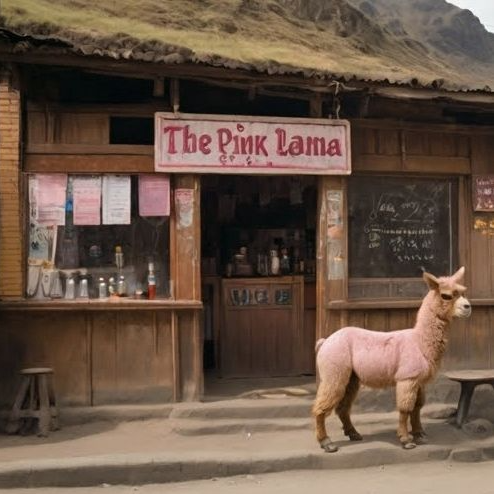

Nick Barton & The Curse of the Pink Pyjamas
Description
Former war hero and self-proclaimed super-sleuth Nick Barton is visited by Cordelia, an old acquaintance from his Bletchley Park days. She's now running a successful anti-ageing cream business using Peruvian llama earwax as a key ingredient. Her problem: someone is flooding the market with counterfeit cream made from inferior alpaca earwax, threatening to ruin her business. During dinner, Barton realises the culprit must be Senor Ambrosia Curd (now using the alias Kirk Ambrose), the villain behind the "Patagonian Milk Wars" of 1937. This realisation triggers a flashback to Barton's previous encounter with Curd, who was selling strawberry-spiked llama milk and disrupting the South American drug trade. The pair is kidnapped and taken to Ambrose Manor, where the villain reveals his master plan. He has stolen Barton's special pink pyjamas—which were blessed by the High Lama of Tibet—and plans to use them during the full moon to control the global dairy industry. The pyjamas, woven from silk harvested from cocoons that grow only on pink llama wool, grant their wearer control over dairy production when worn by someone who has consumed milk from the sacred pink llama. Barton, however, anticipated his scheme. He's befriended Ambrose's groundskeeper and arranged for a herd of llamas—led by Rosa, the legendary Pink Llama herself—to invade the mansion. As the llamas storm in and drink all of Ambrose's milk reserves, Barton explains the pyjamas don't control the dairy industry directly but control those who control it—namely, the llamas themselves. While Ambrose is distracted, Cordelia retrieves the stolen pyjamas. Barton reveals that Scotland Yard has already rounded up Ambrose's fake earwax operation associates. Rosa the llama demands Ambrose return her great-uncle's earwax, and cease all fake earwax production. The tale blends elements of classic British detective fiction with absurdist humour and the recurring motif of dairy products as central to international intrigue. Comparable works include Dick Barton